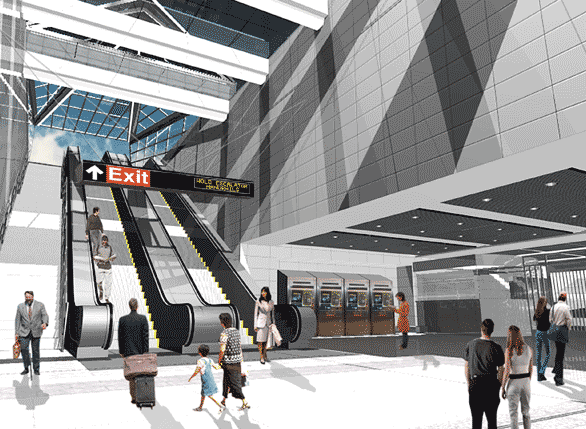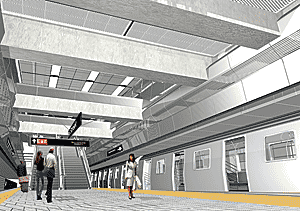Miracle on (and Under) Second Avenue
Between rock and a hard place
On-site blasting and excavating are the inaugural steps of most construction projects, and ground breaking usually proceeds without drawing much attention. In the case of the SAS, the sheer breadth and depth of the tunneling effort required considerable evaluation and detailed explanation in the FEIS. The document describes three approved tunnel methods-tunnel boring technology, cut-and-cover, and mining.
|
|
Some of the tunnels will be excavated using powerful circular boring machines that drill horizontally through the earth. The project will employ two types of boring technologies-a tunnel boring machine (TBM), for cutting through bedrock, and an earth-pressure-balance machine, to bore through soil. Although the street must be excavated in order to insert either type of machine at the desired depth, the process causes little additional surface disruption.
Most of New York City's existing subway system was built using the cut-and-cover method. Although it causes the most surface disruption of the three technologies, it is the easiest method for building a section of tunnel that is relatively close to the surface. This method involves digging trenches from the surface, holding back the surrounding earth with retaining walls, and constructing a frame to support a concrete or metal street deck. Cut-and-cover will be used to excavate more than half of the tunnels and to create entrances at every station location.
The third technique is mining, which will be used on portions of tunnel too short to make tunnel boring cost-effective, or for curved sections of the line where the radius is too tight for a TBM. To create tunnels using this method, contractors drill many small holes within a rock area and then place small amounts of explosives in each hole. Under carefully controlled and monitored conditions, explosives are detonated sequentially for short intervals of time, breaking the rock while dissipating the release of energy, lessening the potential for ground vibration at nearby structures.
|
||||||
When mining is done in soil, this so-called "drill-and-blast" process will not be necessary. Soil and rock can be excavated and removed using backhoes, bulldozers, or a clamshell shovel suspended from a crane.
Regardless of which mining method is used, shafts will be required to remove the excavated rock, soil, and debris. Cranes, small rail cars, and conveyors will be used to bring this spoil to the surface. Most of the excavated material will be clean crushed rock, which can be used to fill abandoned mines, build artificial reefs, reinforce bulkheads, and pave roads.













